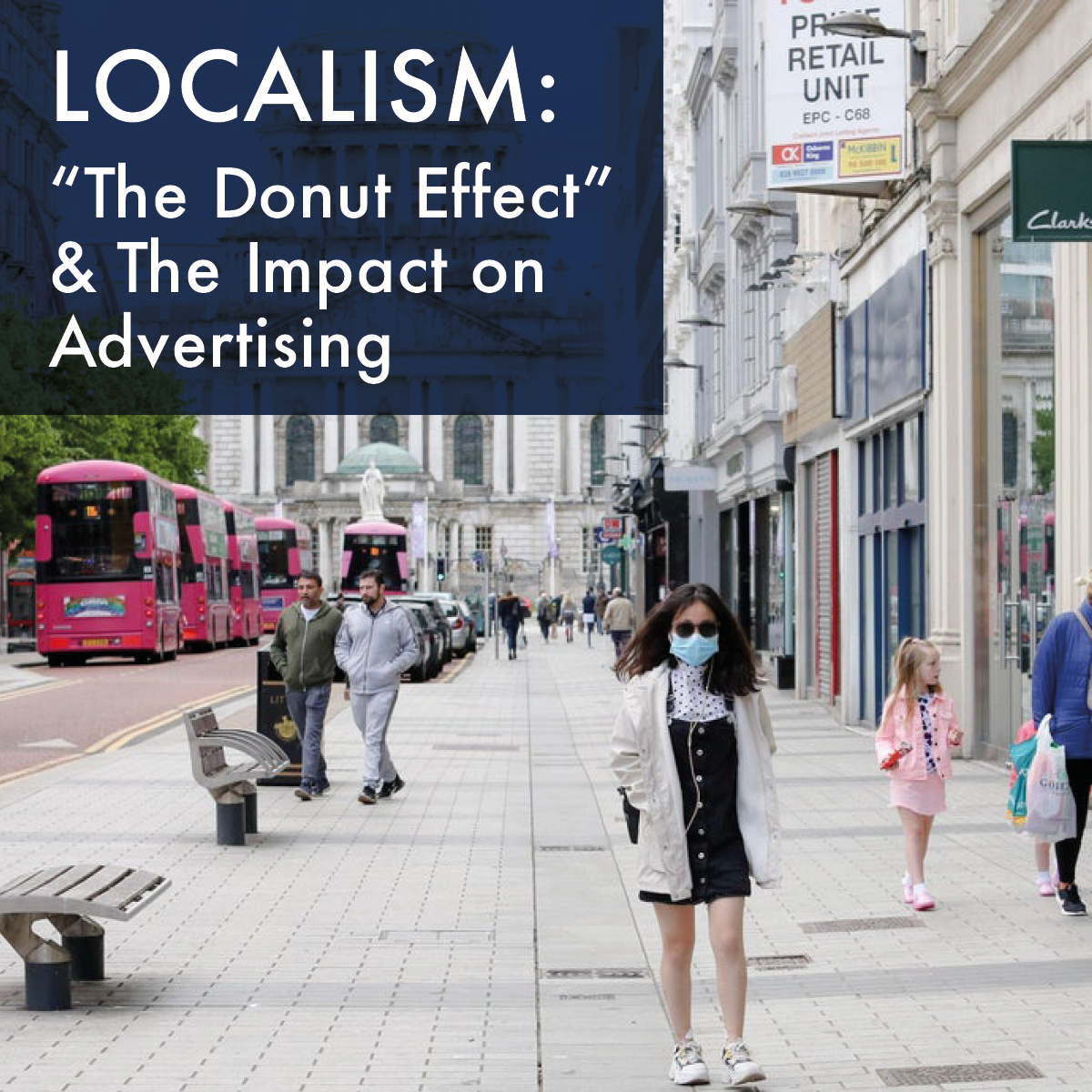Changing behaviours and creating beliefs that will impact on us for some time to come, COVID-19 has hit every aspect of our lives.
2020’s initial lockdowns, through basic necessity, ensured that many people opted for more local stores and service providers. But here’s the real phenomena: people are embracing them.
The environmental and social motives for supporting local have strengthened over time.
So much so that supporting and spending more on local craft and services is Google’s No.1 global macro trend.

UK studies show that 43% of consumers believe that local businesses are good for the economy. 57% of people also say that, once restrictions lift, they would be more likely to spend money at businesses offering locally produced products than pre-pandemic.
With all signs pointing to more focus on localism, it’s imperative that brands not only take notice, they should take action:
Highlighting the authentic and local aspects of services and products should be a key strategy.
If you’re watching from the side-lines, the localism trend is positive. However, it’s also dependent on which sector you’re operating in. This brings important new challenges and considerations for business survival in Northern Ireland.
Local independents across the country have benefited. Intel from FN Research shows footfall up by 41% in convenience stores, up 24% in fruit and vegetable shops and up 31% in both bakeries and butchers.
Conversely, car sales saw a 30% drop across Northern Ireland, compared to the previous year. And it’s not hard to guess why: consumer spending has taken a hit and reduced commuting mean that a swift recovery for car sales is unlikely.
The Donut Problem
Beyond the business impacts of localism, the insight is more nuanced.
Urban/City centre planners are calling it “the donut problem”.
Restrictions mean that people are spending more time living and consuming on the outskirts of the towns/cities, leaving a ghost town in the centre.

From a communications perspective, we’ll be watching for the impact this trend generates and following the implications.
For example, while the ghost town pattern is obvious in footfall, it’s less physically visible in other proxy measures like mobile data usage.
Across the UK, usage has fallen in the middle of cities but risen in the outskirts.
Meanwhile, in the US, CNN reported that Nextdoor, the most popular ‘local’ network, saw its user engagement in the US up 80% in March 2020 as people went into lockdown and tried to find (and offer) local support and connections.
Apparently, both Snapchat and Facebook are working in the background to move to more local networking via Nextdoor, which is due to roll out this year.
Although it is easy to connect with people on the other side of the planet, our worlds, perspectives and ultimately media consumption is also becoming localised.
All signs point to localism being a trend that will stick.
With it comes opportunity for brands to align, get to street level and bring the message to the neighbourhood.





